Arizona, known for its sweeping deserts, red rock canyons, and vibrant history, is also home to some of the most beautiful churches in the American Southwest. These architectural treasures not only stand as places of worship but also as cultural landmarks that reflect the state’s Native American, Spanish, and pioneer influences. From Adobe missions built in the late 1600s to ornate cathedrals constructed in the 20th century, each church tells a unique story of faith, community, and artistry. Here are 11 beautiful churches in Arizona that every visitor should take the time to explore.
1. Mission San Xavier del Bac, Tucson
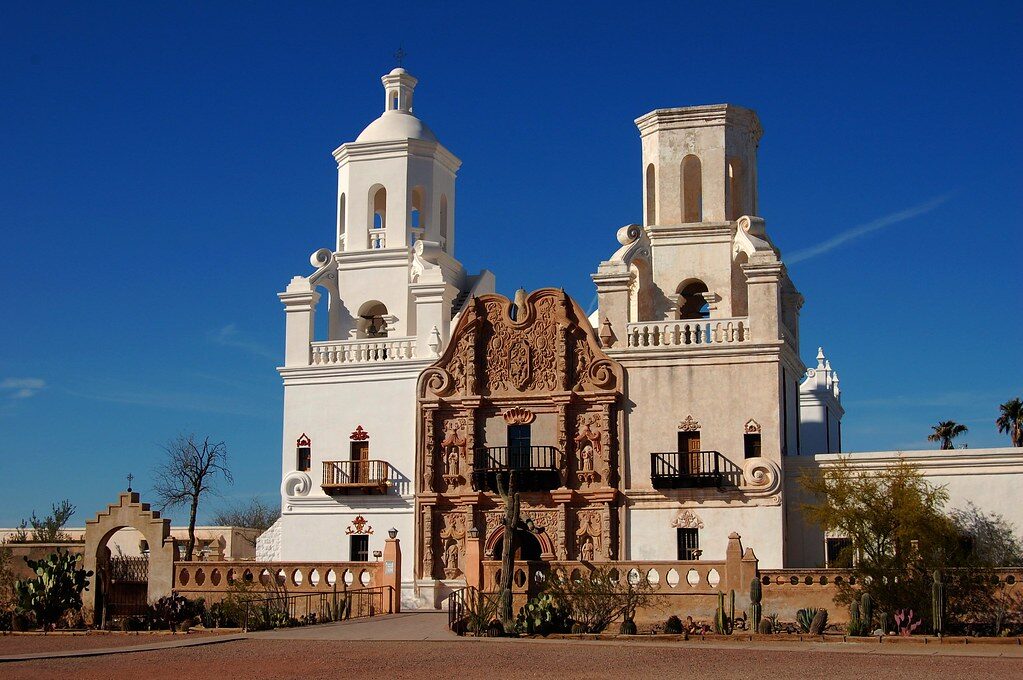
Built in 1692 by Jesuit missionary Father Eusebio Kino and later completed by Franciscan friars in 1797, Mission San Xavier del Bac is often called the “White Dove of the Desert.” Its striking white façade, baroque-inspired details, and twin towers make it one of the most iconic landmarks in Arizona. Located on the Tohono O’odham Nation, it remains an active parish where Native traditions and Catholic faith intersect. The church’s intricate interior frescoes, ornate altarpiece, and historic adobe walls reflect centuries of devotion, artistry, and cultural blending.
2. St. Augustine Cathedral, Tucson
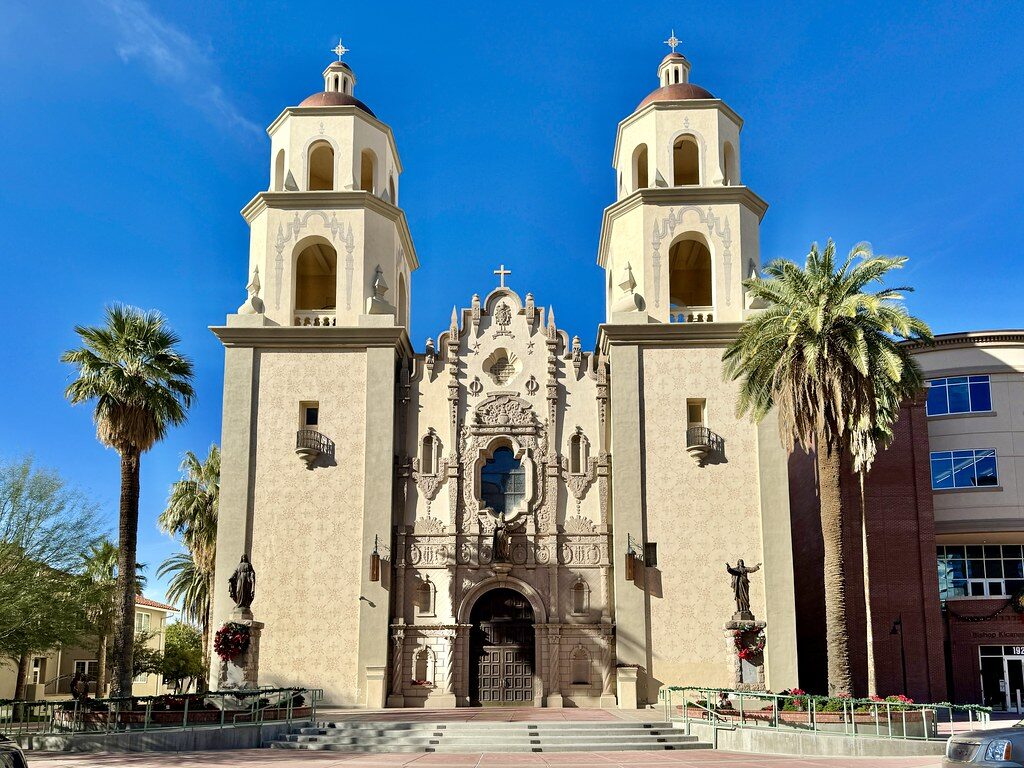
The origins of St. Augustine Cathedral trace back to 1776, though the present structure was completed in 1897 and renovated in the late 1960s. Its striking façade, inspired by Mexican baroque and mission revival styles, features statues of saints, floral motifs, and twin bell towers that frame the entrance beautifully. Inside, colorful stained-glass windows and detailed murals illuminate the sanctuary, creating a warm spiritual atmosphere. As the seat of the Roman Catholic Diocese of Tucson, this cathedral stands not only as a place of worship but also as a centerpiece of the city’s cultural and religious life.
3. Chapel of the Holy Cross, Sedona
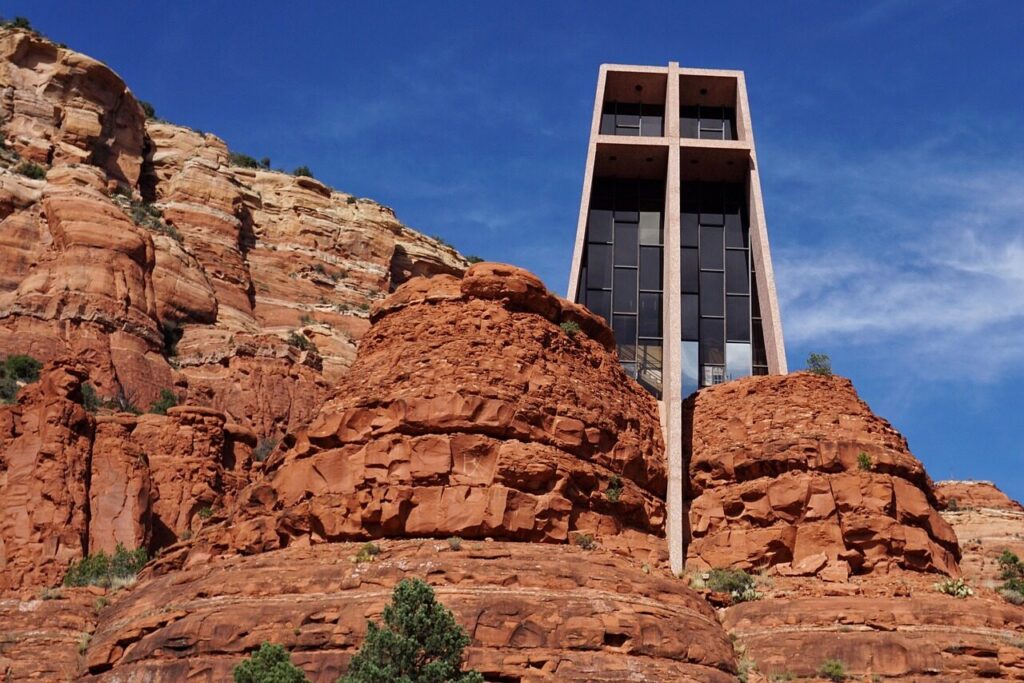
Built in 1956 into the majestic red rock buttes of Sedona, the Chapel of the Holy Cross is a masterpiece of modernist architecture. Commissioned by Marguerite Brunswig Staude, a student of Frank Lloyd Wright, the chapel’s dramatic design features a towering cross that dominates the façade and a panoramic view of the desert landscape. The chapel’s simplicity, marked by clean lines and open space, emphasizes harmony between faith and nature. Visitors are often moved not only by the chapel’s spiritual atmosphere but also by the breathtaking scenery that surrounds it.
4. Mission San José de Tumacácori ,Tumacácori
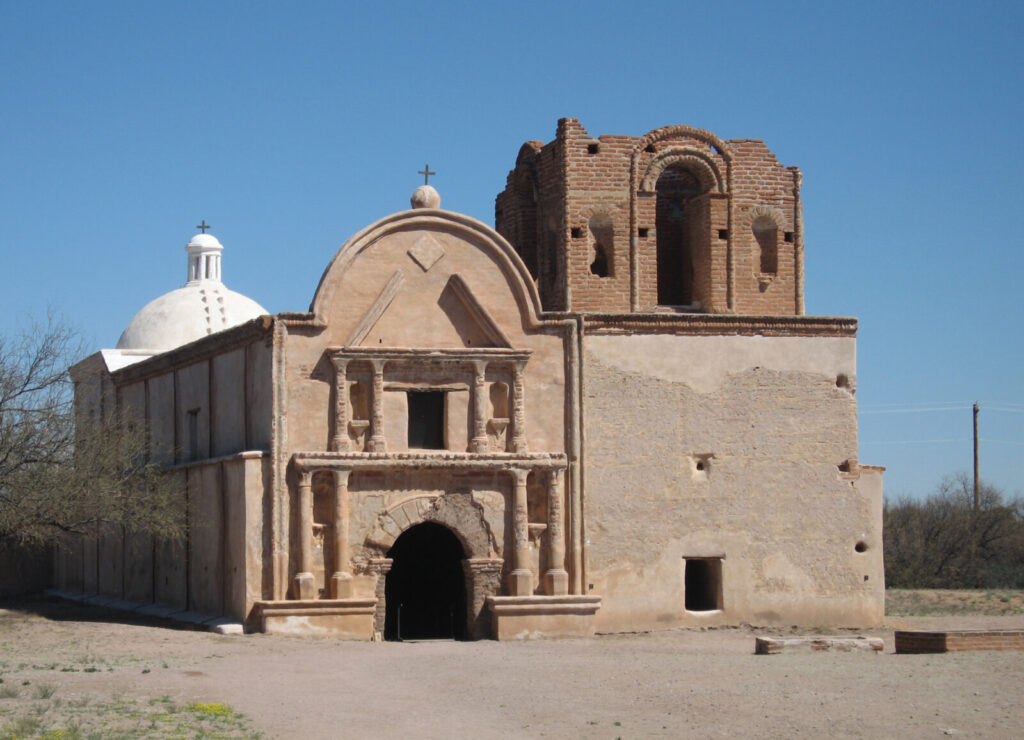
Founded by Father Kino in 1691, Mission San José de Tumacácori is one of Arizona’s oldest religious sites. The church we see today was begun in 1800 by Franciscan missionaries, but was never fully completed due to the hardships faced by the community. Today, its adobe ruins are preserved as part of Tumacácori National Historical Park. Though unfinished, its arched façade and remaining frescoes reveal the artistry of early builders. The mission offers a profound glimpse into the struggles and faith of Arizona’s early Catholic communities and stands as a symbol of endurance in the desert.
5. St. Mary’s Basilica, Phoenix
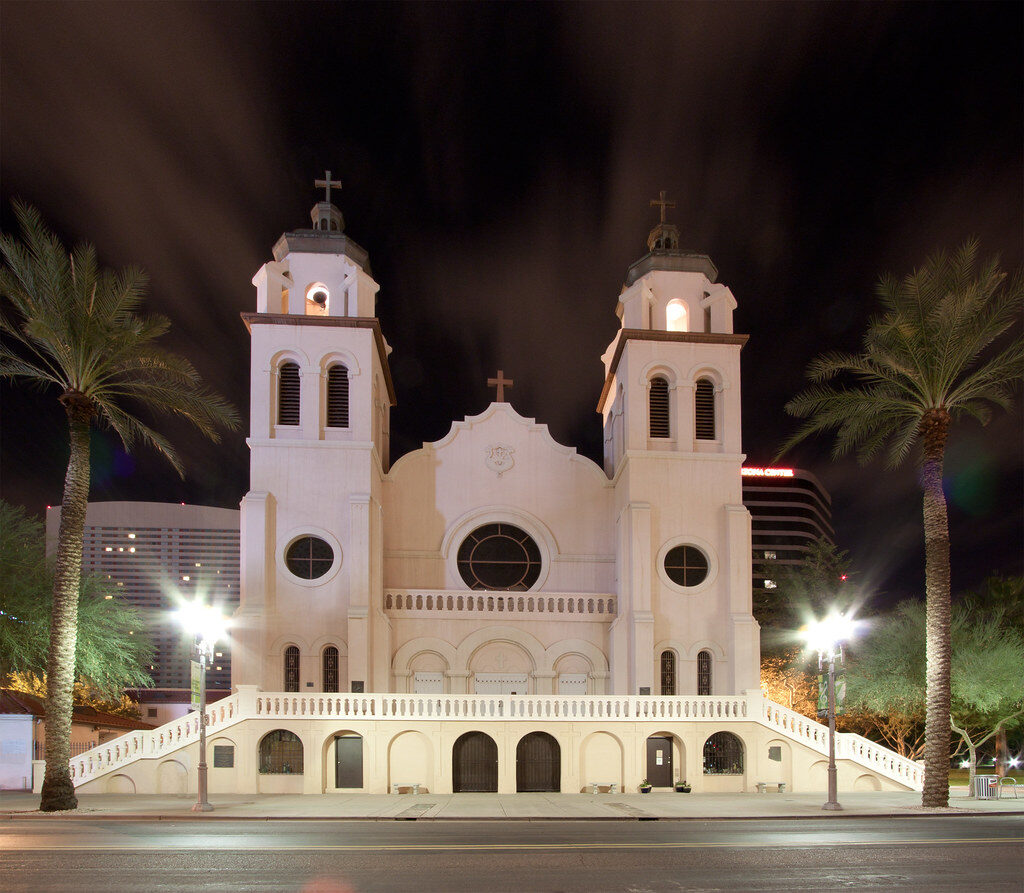
Constructed between 1913 and 1915, St. Mary’s Basilica is the oldest Catholic parish in Phoenix and holds the title of minor basilica. Its Spanish Colonial Revival design, with red-tiled roofs, carved stonework, and twin towers, makes it a striking landmark downtown. Inside, visitors encounter beautiful stained-glass windows imported from Germany and an ornate altar that reflects old-world craftsmanship. Pope John Paul II visited the basilica in 1987, adding to its historical significance. To this day, St. Mary’s serves as both a thriving parish and a beloved gathering place for the Catholic community of Phoenix.
6. Holy Trinity Monastery, St. David
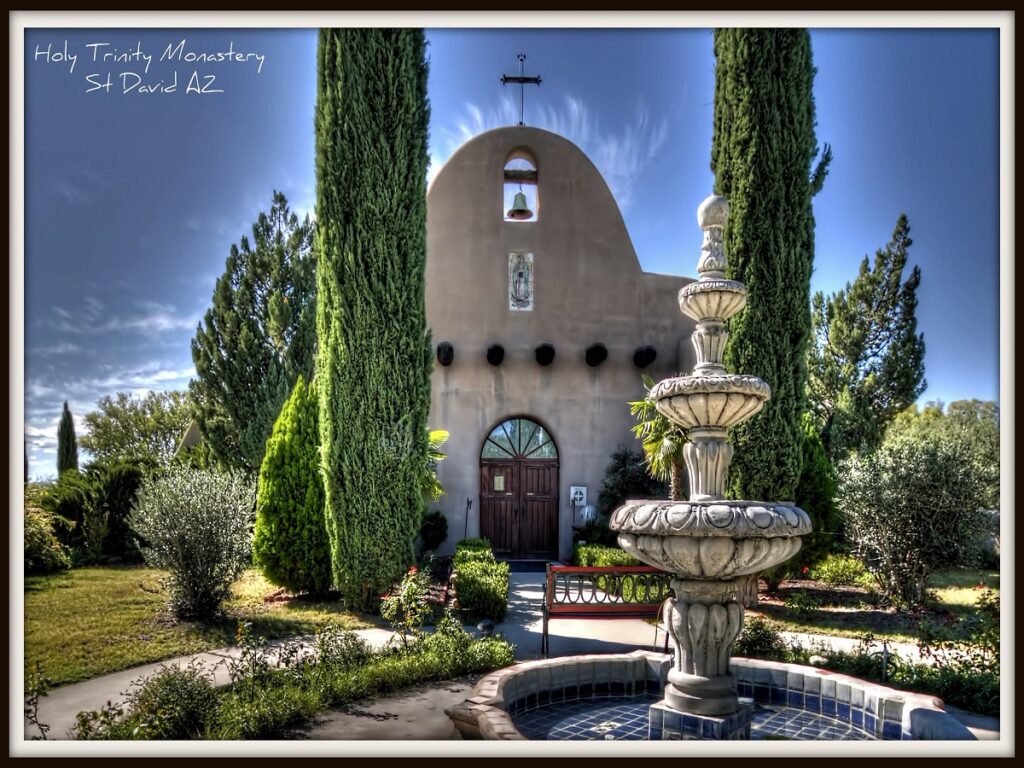
Founded in 1974 by Benedictine monks, Holy Trinity Monastery sits on a peaceful 132-acre property near St. David. Though relatively modern compared to Arizona’s historic missions, its grounds include a serene chapel, guesthouse, and meditation gardens that draw visitors seeking peace and spiritual reflection. The monastery’s cross-shaped chapel is simple yet inviting, with warm wood interiors and colorful stained-glass windows. The surrounding grounds also include a renowned desert labyrinth and lakeside trail, offering a retreat-like atmosphere where faith and the beauty of Arizona’s natural landscape come together in harmony.
7. Sacred Heart Catholic Church, Nogales
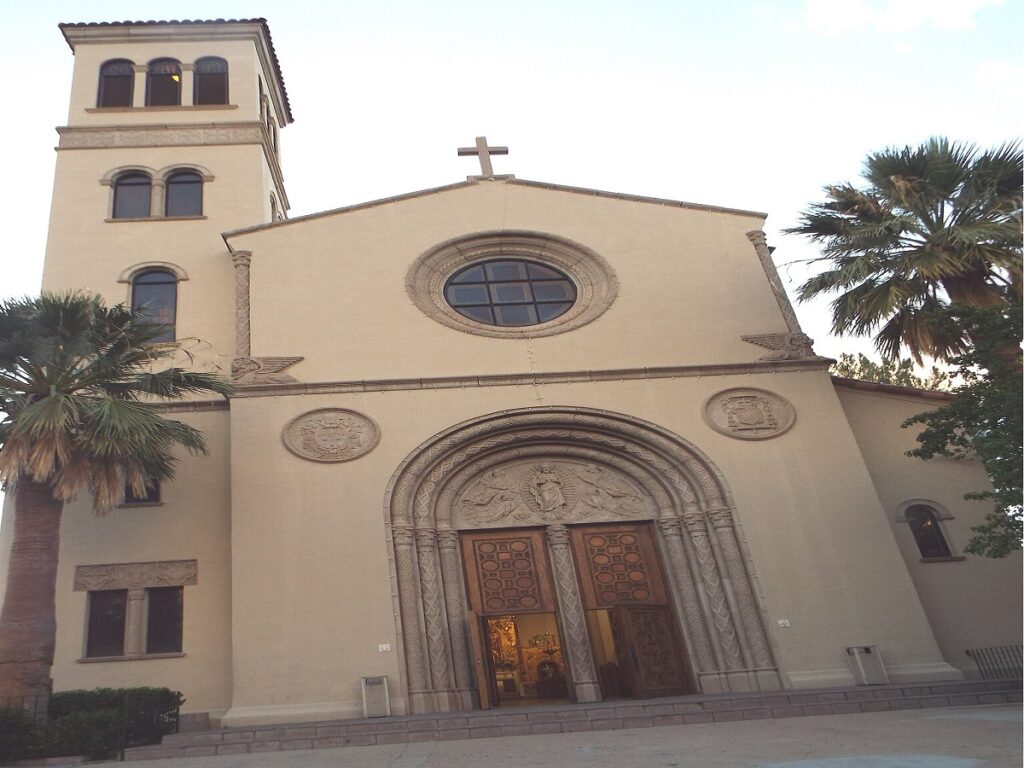
Sacred Heart Catholic Church, originally built in 1897 and later expanded in 1928, stands proudly in Nogales with its neo-Gothic architecture and commanding bell towers. Its façade features pointed arches, stone detailing, and a rose window that immediately captures attention. Inside, the church is filled with stained-glass windows that depict biblical scenes and saints, casting brilliant colors across the sanctuary. This parish remains a spiritual anchor for the border community, symbolizing resilience and unity in a region shaped by diverse cultures and traditions. Its historic charm continues to attract both locals and visitors.
8. Mission San Pedro y San Pablo de Tubutama , Tubutama
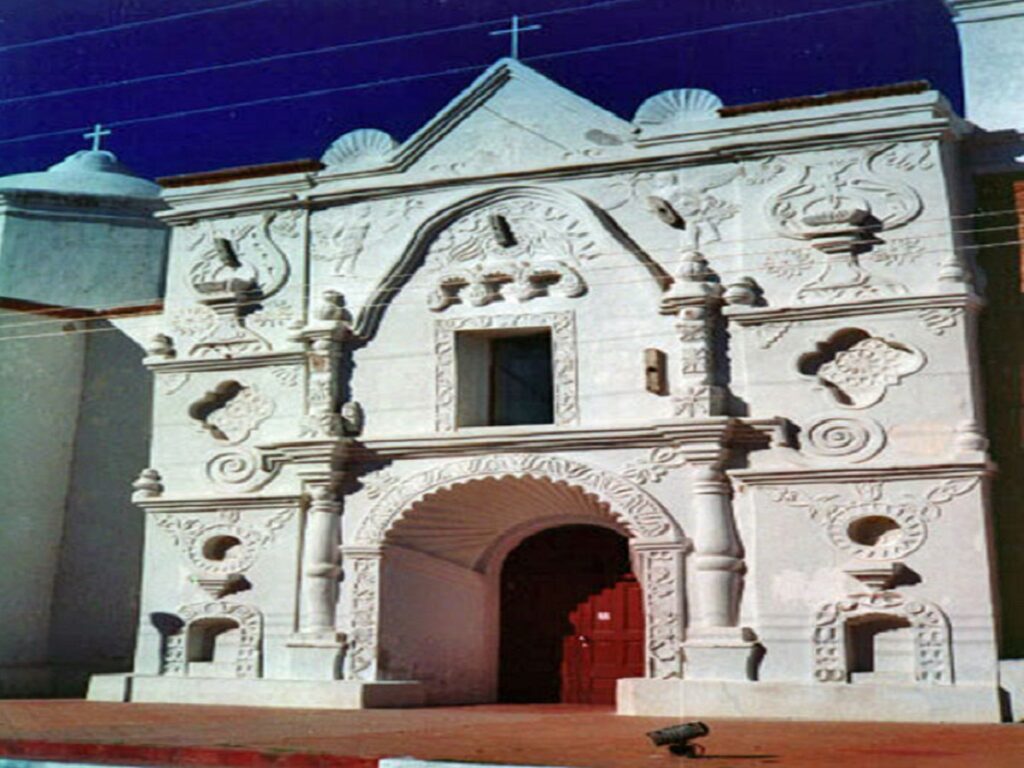
Though lesser known than San Xavier del Bac, this mission was established by Father Kino in 1691 and served as an important outpost for Jesuit and Franciscan missionaries. Located near the Santa Cruz River, the mission’s current structure reflects renovations made in the 18th and 19th centuries. Its adobe walls, domed roof, and modest bell tower showcase the simple yet enduring mission style. While not as ornate as larger churches, it offers an authentic look into Arizona’s early mission history. Today, the site remains a quiet reminder of faith, resilience, and the Spanish colonial presence.
9. Our Lady of the Blessed Sacrament, Miami
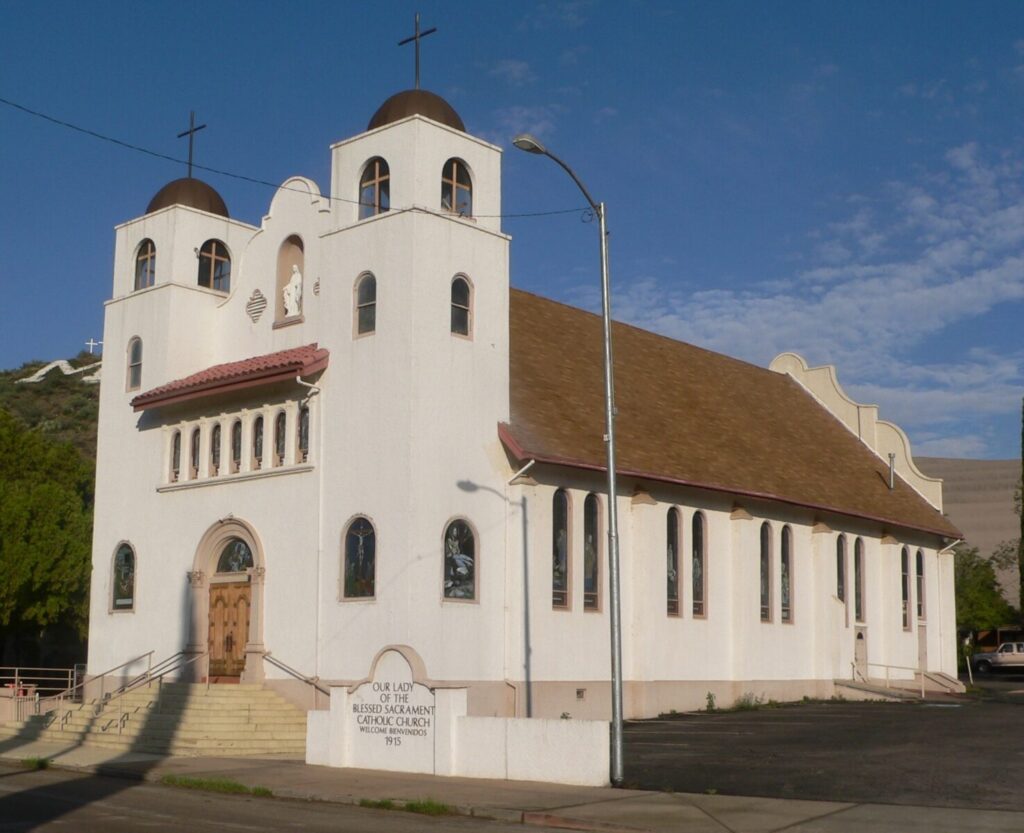
Built in 1917 in the mining town of Miami, Arizona, Our Lady of the Blessed Sacrament is a fine example of Gothic Revival architecture. The church features pointed arches, intricate stained-glass windows, and an imposing bell tower that rises above the small town. Inside, wooden pews and colorful glasswork create an intimate, reverent space for worship. The church was added to the National Register of Historic Places in 2008, recognizing its architectural significance and role in serving mining families who relied on faith during challenging times.
10. San Pedro Chapel, Tucson
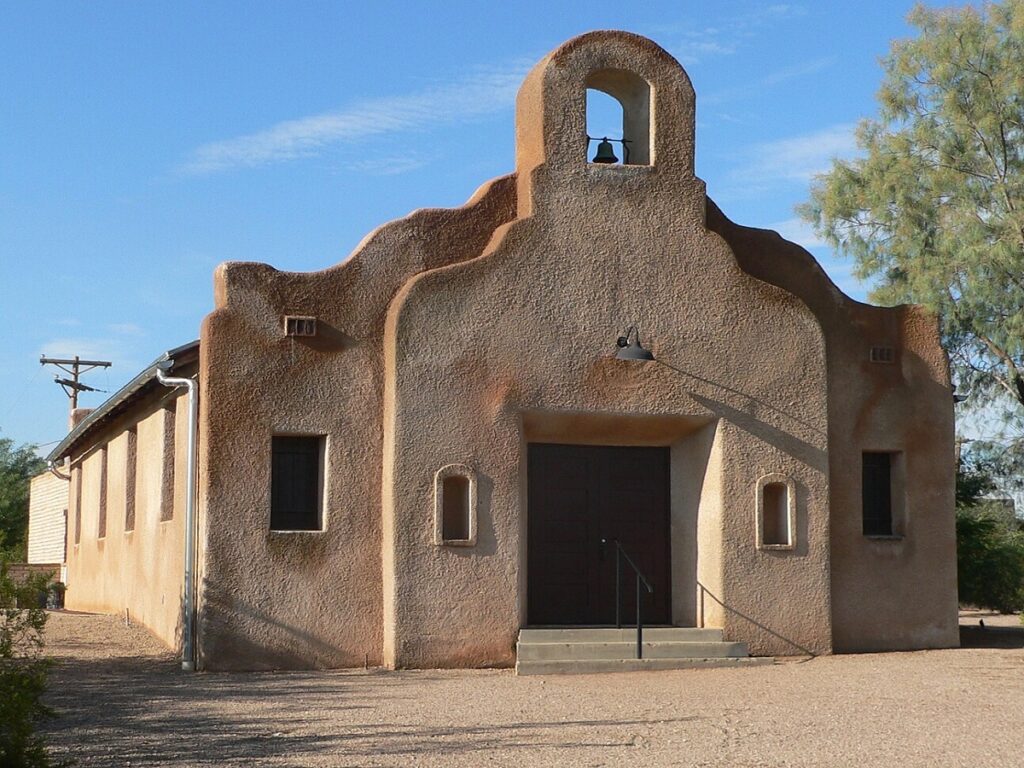
Originally built in 1915 by El Fuerte, a small Mexican-American community, San Pedro Chapel is a modest but historic adobe church. After being destroyed by a tornado in 1929, it was rebuilt in 1932 and has since been preserved as a cultural landmark. Its simple whitewashed walls and bell tower reflect classic mission-style architecture. Though no longer serving as an active parish, it is maintained by the Old Fort Lowell Neighborhood Association and listed on the National Register of Historic Places. The chapel offers visitors a glimpse of Tucson’s local faith heritage.
11. St. Anthony’s Greek Orthodox Monastery, Florence
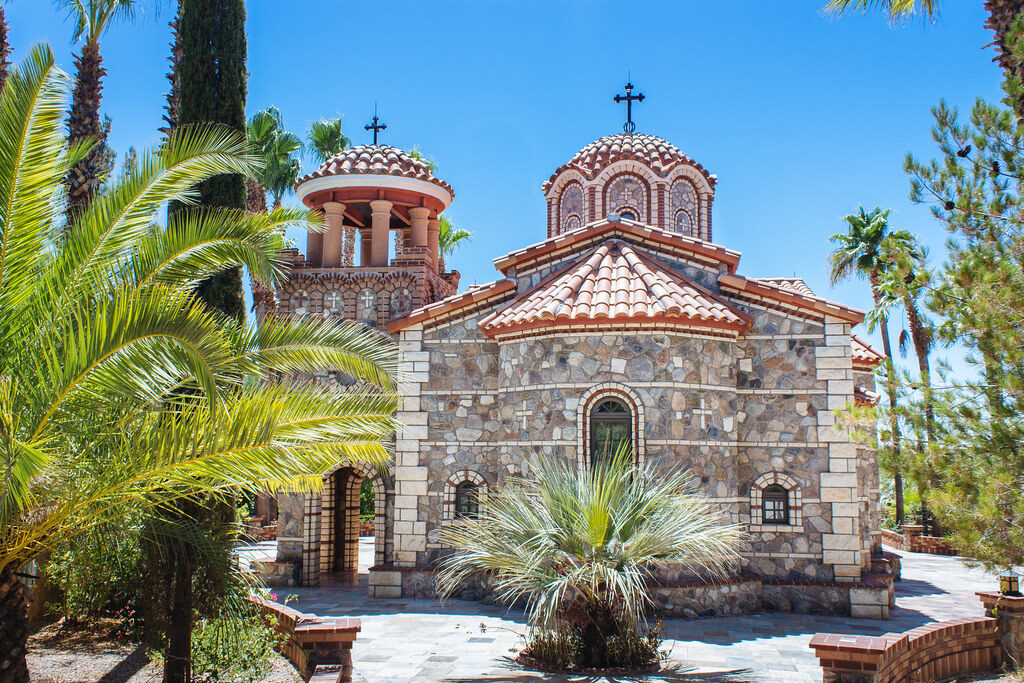
Established in 1995 by six Athonite monks, St. Anthony’s Monastery is a vibrant spiritual retreat that blends traditional Byzantine design with Arizona’s desert setting. The monastery complex features several chapels, each dedicated to different saints, with domed roofs, colorful icons, and hand-painted frescoes. The grounds are filled with olive groves, citrus trees, and peaceful courtyards that evoke the feel of Mediterranean monasteries. Pilgrims and visitors are welcomed here, making it not only a religious destination but also a cultural treasure. Its beauty and serenity leave a lasting impression on all who enter.
Comments